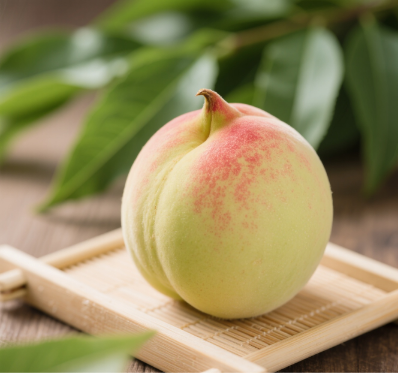Long known as a fruit export powerhouse, Vietnam is now facing an unexpected trend: its domestic market is being flooded by high-end Chinese fruits. From Yunnan’s premium green-yellow plums to crisp “eagle-beak peaches” and inexpensive jujubes, these fruits are dominating shelves and commanding high prices—sometimes up to 20 times higher than local varieties. This phenomenon has sparked curiosity and concern, revealing a complex shift in the region’s fruit trade dynamics.
The Rise of Chinese Fruits in Vietnamese Shoppers’ Baskets
Chinese fruits have become status symbols in urban Vietnamese markets. Take Yunnan’s green-yellow plums, for example, which are priced at $10–$19 per kilogram—15 to 20 times more expensive than local plums. Their popularity stems from their unique taste (crisp, sweet-sour, and juicy with small pits), exclusivity (often sold out within a day), and luxurious appeal. They even surpass US cherries in prestige. Similarly, Chinese jujubes ($3.80/kg) are high quality and half the price of their US and Australian counterparts, making them popular among homemakers for snacking and cooking. The “eagle-beak peach,” priced at $5.50 per kilogram, is notorious for disappearing from shelves within hours due to its crunchy texture and intense sweetness. Exotic varieties like “Jade Emperor Plums” ($19.60/kg) and “Golden Silk Plums” ($29–$49/kg) further drive demand, rivaling premium fruits like seedless lychees.
Why China’s Fruits Are Winning
- Supply Gap and Consumer Demand: Vietnam’s tropical climate limits the commercial cultivation of temperate fruits, such as plums, peaches, and jujubes. Eager for novelty and diversity, Vietnamese consumers are turning to imports to fill this void.
- Competitive Pricing and Scale: China’s vast production capacity drives down costs. For example, Chinese jujubes cost half as much as Western imports, providing an “affordable luxury” for price-sensitive consumers.
- Logistics Efficiency: Guangxi’s Pingxiang railway port streamlines cross-border transport, ensuring fresh arrivals with less than 2% spoilage. Cold chain advancements and expedited customs processing in as little as three hours keep quality intact.
The impact on Vietnam’s domestic fruit industry
While Chinese imports thrive, Vietnam’s local fruits face challenges.
- Plummeting prices: Overproduction and declining Chinese demand have slashed prices for lychees, durians, and rambutans. Rambutan now sells for just $0.17–$0.28/kg, and mandarin oranges sell for $0.20–$0.29/kg.
- Export Dilemma: Vietnam’s fruit exports to China dropped 6.3% from January to May of 2025. Stringent Chinese customs inspections cause delays, leading to spoilage and losses.
- Forced Premiumization: Some farmers are adopting GlobalGAP standards to compete, and mango exports to China remain strong (97% market share). However, relying on a single market poses risks.
The Future: Balancing Act or Innovation?
Vietnam is at a pivotal crossroads:
- Diversifying Markets: The country is expanding to CPTPP and EVFTA nations to reduce its dependency on China.
- Boosting Domestic Consumption: Campaigns promoting local fruits aim to offset export losses.
- Strengthening agri-ties: Bilateral trade agreements could streamline customs procedures, and investing in processing (e.g., durian pulp and frozen mango) could add valu
Conclusion: A Tale of Two Fruit Powerhouses
The influx of Chinese fruit in Vietnam reflects broader regional trade evolution. While China excels in temperate fruits, Vietnam dominates tropical exports. For Vietnamese consumers, this trend means more premium options. However, producers and policymakers must innovate cultivation techniques, diversify markets, and add value through processing. Otherwise, the country risks falling behind in the global fruit market. As a Ho Chi Minh City retailer said, “Chinese fruits are a delicious treat, but Vietnam must grow its own stars to shine in the long term.“









